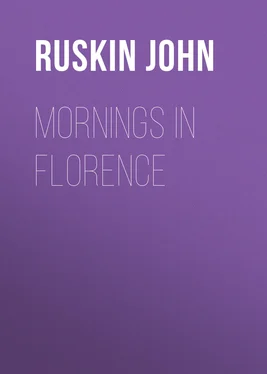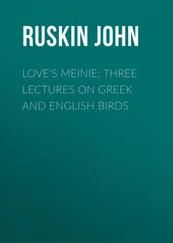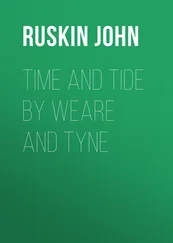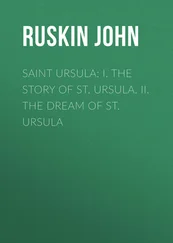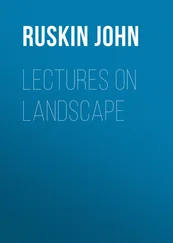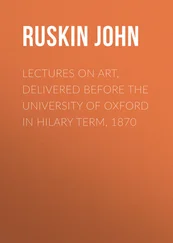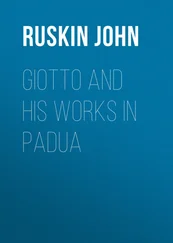John Ruskin - Mornings in Florence
Здесь есть возможность читать онлайн «John Ruskin - Mornings in Florence» — ознакомительный отрывок электронной книги совершенно бесплатно, а после прочтения отрывка купить полную версию. В некоторых случаях можно слушать аудио, скачать через торрент в формате fb2 и присутствует краткое содержание. Жанр: foreign_antique, foreign_home, literature_19, visual_arts, на английском языке. Описание произведения, (предисловие) а так же отзывы посетителей доступны на портале библиотеки ЛибКат.
- Название:Mornings in Florence
- Автор:
- Жанр:
- Год:неизвестен
- ISBN:нет данных
- Рейтинг книги:4 / 5. Голосов: 1
-
Избранное:Добавить в избранное
- Отзывы:
-
Ваша оценка:
- 80
- 1
- 2
- 3
- 4
- 5
Mornings in Florence: краткое содержание, описание и аннотация
Предлагаем к чтению аннотацию, описание, краткое содержание или предисловие (зависит от того, что написал сам автор книги «Mornings in Florence»). Если вы не нашли необходимую информацию о книге — напишите в комментариях, мы постараемся отыскать её.
Mornings in Florence — читать онлайн ознакомительный отрывок
Ниже представлен текст книги, разбитый по страницам. Система сохранения места последней прочитанной страницы, позволяет с удобством читать онлайн бесплатно книгу «Mornings in Florence», без необходимости каждый раз заново искать на чём Вы остановились. Поставьте закладку, и сможете в любой момент перейти на страницу, на которой закончили чтение.
Интервал:
Закладка:
"Exquisitely sculptured fringe!" and you have just been abusing sculptors who play tricks with marble! Yes, and you cannot find a better example, in all the museums of Europe, of the work of a man who does not play tricks with it—than this tomb. Try to understand the difference: it is a point of quite cardinal importance to all your future study of sculpture.
I told you, observe, that the old Galileo was lying on a piece of embroidered carpet. I don't think, if I had not told you, that you would have found it out for yourself. It is not so like a carpet as all that comes to.
But had it been a modern trick-sculpture, the moment you came to the tomb you would have said, "Dear me! how wonderfully that carpet is done,—it doesn't look like stone in the least—one longs to take it up and beat it, to get the dust off."
Now whenever you feel inclined to speak so of a sculptured drapery, be assured, without more ado, the sculpture is base, and bad. You will merely waste your time and corrupt your taste by looking at it. Nothing is so easy as to imitate drapery in marble. You may cast a piece any day; and carve it with such subtlety that the marble shall be an absolute image of the folds. But that is not sculpture. That is mechanical manufacture.
No great sculptor, from the beginning of art to the end of it, has ever carved, or ever will, a deceptive drapery. He has neither time nor will to do it. His mason's lad may do that if he likes. A man who can carve a limb or a face never finishes inferior parts, but either with a hasty and scornful chisel, or with such grave and strict selection of their lines as you know at once to be imaginative, not imitative.
But if, as in this case, he wants to oppose the simplicity of his central subject with a rich background,—a labyrinth of ornamental lines to relieve the severity of expressive ones,—he will carve you a carpet, or a tree, or a rose thicket, with their fringes and leaves and thorns, elaborated as richly as natural ones; but always for the sake of the ornamental form, never of the imitation; yet, seizing the natural character in the lines he gives, with twenty times the precision and clearness of sight that the mere imitator has. Examine the tassels of the cushion, and the way they blend with the fringe, thoroughly; you cannot possibly see finer ornamental sculpture. Then, look at the same tassels in the same place of the slab next the west end of the church, and you will see a scholar's rude imitation of a master's hand, though in a fine school. (Notice, however, the folds of the drapery at the feet of this figure: they are cut so as to show the hem of the robe within as well as without, and are fine.) Then, as you go back to Giotto's chapel, keep to the left, and just beyond the north door in the aisle is the much celebrated tomb of C. Marsuppini, by Desiderio of Settignano. It is very fine of its kind; but there the drapery is chiefly done to cheat you, and chased delicately to show how finely the sculptor could chisel it. It is wholly vulgar and mean in cast of fold. Under your feet, as you look at it, you will tread another tomb of the fine time, which, looking last at, you will recognize the difference between the false and true art, as far as there is capacity in you at present to do so. And if you really and honestly like the low-lying stones, and see more beauty in them, you have also the power of enjoying Giotto, into whose chapel we will return to-morrow;—not to-day, for the light must have left it by this time; and now that you have been looking at these sculptures on the floor you had better traverse nave and aisle across and across; and get some idea of that sacred field of stone. In the north transept you will find a beautiful knight, the finest in chiselling of all these tombs, except one by the same hand in the south aisle just where it enters the south transept.
Examine the lines of the Gothic niches traced above them; and what is left of arabesque on their armour. They are far more beautiful and tender in chivalric conception than Donatello's St. George, which is merely a piece of vigorous naturalism founded on these older tombs. If you will drive in the evening to the Chartreuse in Val d'Ema, you may see there an uninjured example of this slab-tomb by Donatello himself; very beautiful; but not so perfect as the earlier ones on which it is founded. And you may see some fading light and shade of monastic life, among which if you stay till the fireflies come out in the twilight, and thus get to sleep when you come home, you will be better prepared for to-morrow morning's walk—if you will take another with me—than if you go to a party, to talk sentiment about Italy, and hear the last news from London and New York.
THE SECOND MORNING
To-day, as early as you please, and at all events before doing anything else, let us go to Giotto's own parish-church, Santa Maria Novella. If, walking from the Strozzi Palace, you look on your right for the "Way of the Beautiful Ladies," it will take you quickly there.
Do not let anything in the way of acquaintance, sacristan, or chance sight, stop you in doing what I tell you. Walk straight up to the church, into the apse of it;—(you may let your eyes rest, as you walk, on the glow of its glass, only mind the step, half way;)—and lift the curtain; and go in behind the grand marble altar, giving anybody who follows you anything they want, to hold their tongues, or go away.
You know, most probably, already, that the frescos on each side of you are Ghirlandajo's. You have been told they are very fine, and if you know anything of painting, you know the portraits in them are so. Nevertheless, somehow, you don't really enjoy these frescos, nor come often here, do you?
The reason of which is, that if you are a nice person, they are not nice enough for you; and if a vulgar person, not vulgar enough. But if you are a nice person, I want you to look carefully, to-day, at the two lowest, next the windows, for a few minutes, that you may better feel the art you are really to study, by its contrast with these.
On your left hand is represented the birth of the Virgin, On your right, her meeting with Elizabeth.
You can't easily see better pieces—nowhere more pompous pieces—of flat goldsmiths' work. Ghirlandajo was to the end of his life a mere goldsmith, with a gift of portraiture. And here he has done his best, and has put a long wall in wonderful perspective, and the whole city of Florence behind Elizabeth's house in the hill country; and a splendid bas-relief, in the style of Luca della Robbia, in St. Anne's bedroom; and he has carved all the pilasters, and embroidered all the dresses, and flourished and trumpeted into every corner; and it is all done, within just a point, as well as it can be done; and quite as well as Ghirlandajo could do it. But the point in which it just misses being as well as it can be done, is the vital point. And it is all simply—good for nothing.
Extricate yourself from the goldsmith's rubbish of it, and look full at the Salutation. You will say, perhaps, at first, "What grand and graceful figures!" Are you sure they are graceful? Look again and you will see their draperies hang from them exactly as they would from two clothes-pegs. Now, fine drapery, really well drawn, as it hangs from a clothes-peg, is always rather impressive, especially if it be disposed in large breadths and deep folds; but that is the only grace of their figures.
Secondly. Look at the Madonna, carefully. You will find she is not the least meek—only stupid,—as all the other women in the picture are.
"St. Elizabeth, you think, is nice"? Yes; "and she says, 'Whence is this to me, that the mother of my Lord should come to me?' really with a great deal of serious feeling?" Yes, with a great deal. Well, you have looked enough at those two. Now—just for another minute—look at the birth of the Virgin. "A most graceful group, (your Murray's Guide tells you,) in the attendant servants." Extremely so. Also, the one holding the child is rather pretty. Also, the servant pouring out the water does it from a great height, without splashing, most cleverly. Also, the lady coming to ask for St. Anne, and see the baby, walks majestically and is very finely dressed. And as for that bas-relief in the style of Luca della Robbia, you might really almost think it was Luca! The very best plated goods, Master Ghirlandajo, no doubt—always on hand at your shop.
Читать дальшеИнтервал:
Закладка:
Похожие книги на «Mornings in Florence»
Представляем Вашему вниманию похожие книги на «Mornings in Florence» списком для выбора. Мы отобрали схожую по названию и смыслу литературу в надежде предоставить читателям больше вариантов отыскать новые, интересные, ещё непрочитанные произведения.
Обсуждение, отзывы о книге «Mornings in Florence» и просто собственные мнения читателей. Оставьте ваши комментарии, напишите, что Вы думаете о произведении, его смысле или главных героях. Укажите что конкретно понравилось, а что нет, и почему Вы так считаете.
